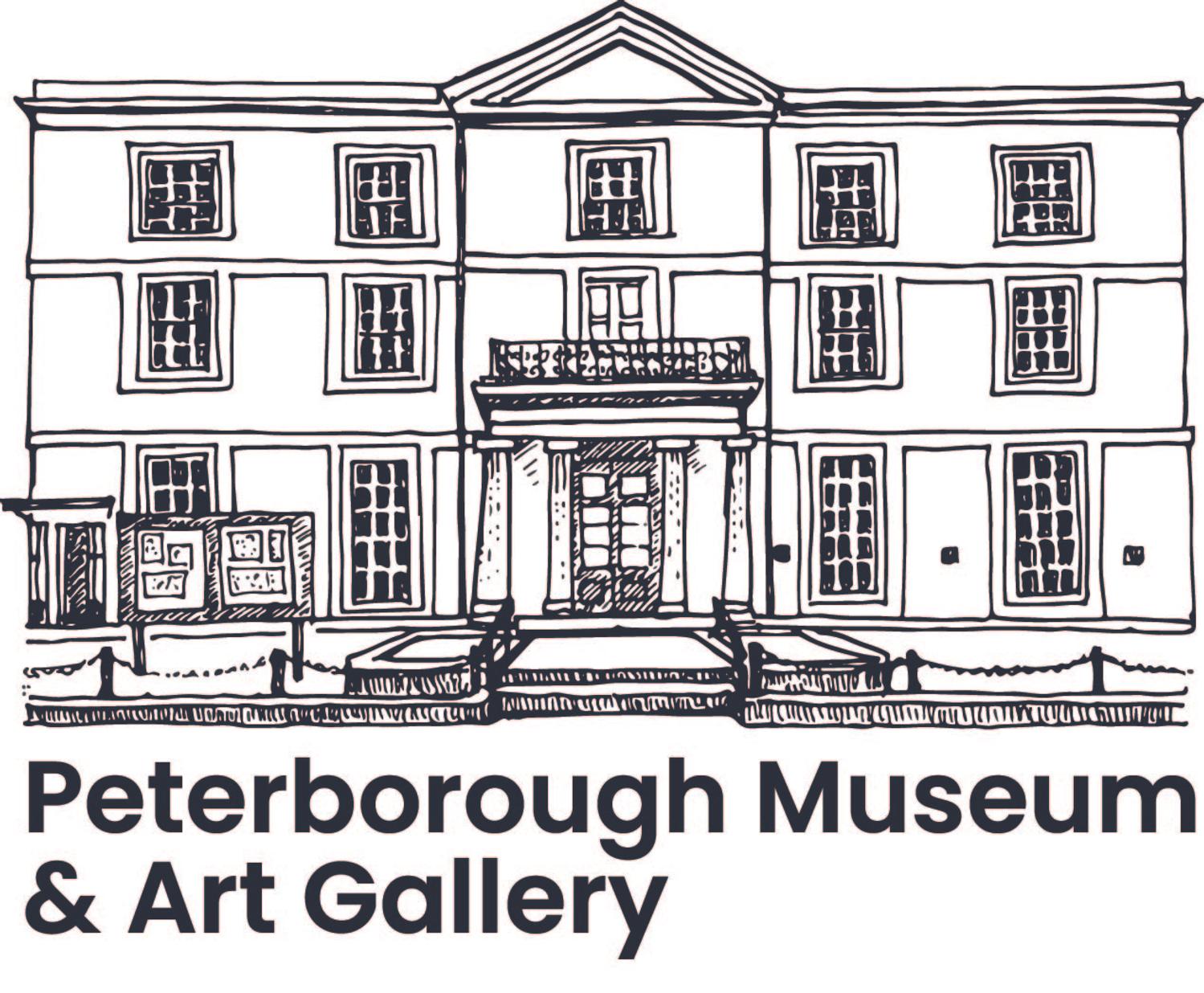Tudor Peterborough
Wednesday 03 January 2024
The Tudors and Peterborough 1485 - 1603
1485, Death of Richard III and the Start of the Tudor Age
On the 22nd of August 1485, Henry Tudor beat King Richard III at the Battle of Bosworth Field, Richard had been king for only two years. This was the last battle of the War of the Roses, and brought to an end Plantagenet rule of England. Henry Tudor became Henry VII, the first Tudor monarch.
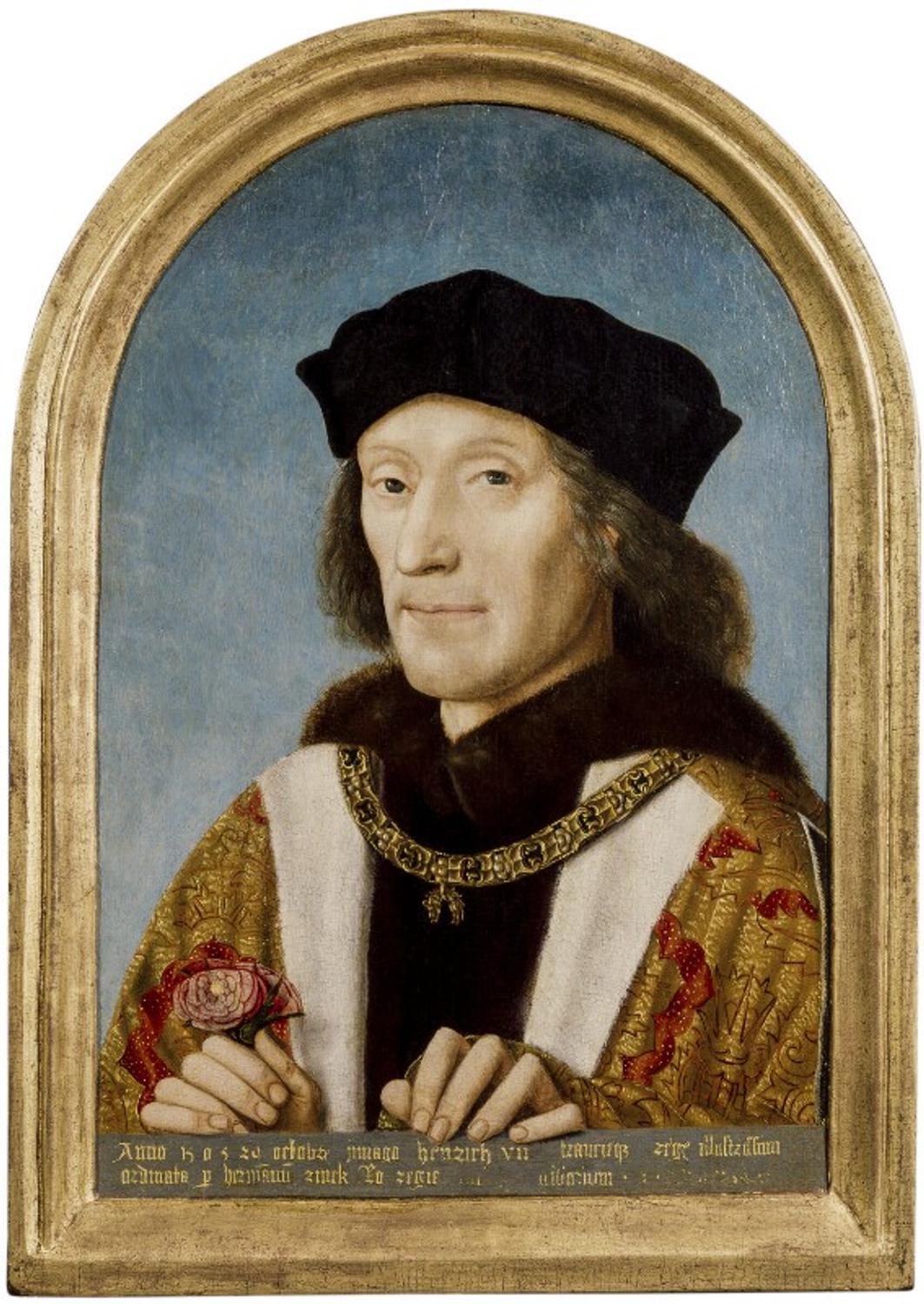
King Henry VII by Unknown Netherlandish artist. Oil on panel, 1505. NPG 416. © National Portrait Gallery, London. CC-BY-NC-ND 3.0
Richard III's body was only found in 2012, discovered under the Grey Friers car park in Leicester, where he had been buried after the battle. Analysis of his body showed that he did have a curvature of the spine (scoliosis) which would have meant that his right shoulder was higher than the left, though with a good tailor and custom armour this would not have been obvious.
His body also revealed 11 injuries occurring around time of death including two injuries at the base of his skull that are likely to have been fatal. His remains also show a penetrating injury to his pelvis where a weapon must have been thrust from behind, entering the right buttock and penetrating right through the body. This type of injury would be hard to do to an armoured body, so was likely to have occurred after death as a humiliation.
1485, Lolham Manor
Lolham Manor or Hall is a grade II listed building with Tudor features. Dated to the early years of the Tudor period, it contains a fireplace from the time and also wooden panelling.
The manor was long associated with the Claypoles of Northborough Manor, especially Adam Claypole. He was living in Lolham Hall in 1622 when he gifted Northborough Manor to his son John Claypole. The hall is also associated with the Clitheroes/Clitherows and there is a reference to Christopher Clitheroe's Estate at Lolham in 1693 in the Fitzwilliam papers in Northamptonshire Archives. There is also a reference to a mortgage for Leonard Gale of the Manor of Lolham. Leonard Gale was father-in-law to James Clitheroe the second.
Lolham Manor is a private property and cannot be viewed by the public.
References: London Metropolitan Archives ACC/1360 http://discovery.nationalarchives.gov.uk/details/r/b292a2ca-9c28-4b37-8265-cf3875816561
1487, Early Tudor Guilds
One of the earliest Tudor records in Peterborough is a charter relating to St John's Church. It is part of a collection of charters, mainly relating to medieval Peterborough, that detail the exchange of church-owned property from one person to another. What is most interesting about this is its reference to three guilds that operated in the city, known as 'the guilds of the Blessed Mary the Virgin, St John the Baptist and the Blessed Saints George and James, Martyrs'. The guilds were run by Aldermen, who were a form of councillor and would have been very important in the city. The document does not tell us if the guilds are craft or merchant guilds, but it does list the name of the Aldermen as John Kilham, Walter Watson and John Joy.
Other records reference the three guilds in the medieval and Tudor periods, and we know that they were based in St John's Church in the centre of town.
Reference: PAS/GCH/24 and 25, Charters Relating to the Parish Church (St John) and Guild Lands of Peterborough, 30 January 1487-88
1515, John Walpole: Lascivious Thief to Respected Prior
When the Bishop of Lincoln, William Atwater, visited Peterborough Abbey on 8th July 1515 he was not impressed with what he discovered. Instead of the upstanding penitent monks he was hoping to find, he discovered more of a student halls atmosphere. John Walpole or Walpool was said to have stolen jewels from St Oswald’s shrine to pay a local woman for her ‘services’. It is believed he was also in the group of monks who often visited a tavern close to the abbey (possibly The Angel, which the abbey supposedly owned) and after spending time in the ‘vulgar company of dancers and ballad singers’ arrived back in the dormitory and began singing and dancing until late. John Walpole must have atoned for his poor behaviour, for he remained at the abbey and was later noted as the prior in 1534. He was pensioned off in 1539 due to the dissolution of the monasteries and was provided with £14 per year, which was a very handsome sum for a pension.
Reference: 'Houses of Benedictine monks: The abbey of Peterborough', in A History of the County of Northampton: Volume 2, ed. R M Serjeantson and W R D Adkins (London, 1906), pp. 83-95. British History Online http://www.british-history.ac.... [accessed 12 July 2019].
1521, Robert Fayrfax the Tudor Composer
Robert Fayrfax or Fairfax was one of the best Tudor composers and memorable for his many achievements. He was born in Deeping Gate on 23rd April 1464, a member of the Fairfax/Fayrfax family of whom Fairfax House is named after, but nothing is known of his life in Deeping Gate.
Fayrfax was an exceptionally gifted musician and after studying at Cambridge University and gaining a doctorate, Fayrfax then moved to Oxford where he gained another doctorate in Music from Oxford in 1511, which is the first one ever recorded.
The Fairfax family were friends of Margaret Beaufort, so it is little surprise that Robert had found his way to the royal court. By the time he had completed his doctorates he had already sung at several state celebrations for Henry VII and his family. He appears to have been friends with Henry VIII and was well-paid for his work at court.
Some of Fayrfaxe's works were recorded in the Eton Choir book, which is a book containing written music dated 1500-1504, of such significance it has been incorporated into the UK UNESCO Memory of the World Register. Other standalone pieces of his music are still played and also receive great praise for their composition. It is quite remarkable that the music we associate with the enigmatic Tudor period can be traced to a baby born in Deeping Gate.
Robert Fayrfax died in 1521 in St. Albans, where he had spent much of his adult life.
1530, Cardinal Wolsey Visits at Easter
Cardinal Thomas Wolsey was an important figure in the life and politics of Henry VIII. A well-educated man, he became an advisor to Henry. He is possibly best known for failing to annul Henry's marriage to Katherine of Aragon. Henry wished for more children and wanted marry Anne Boleyn, but divorce wasn't an option. Wolsey tried to get the marriage annulled by the Pope, but this was unsuccessful. Henry was angry that he couldn't end his marriage and Wolsey was in trouble. His failure to convince the Pope was seen as an act of treason and he was called to London to face Henry. But Wolsey's health had been deteriorating and he never made it back to London. He did, however, make it to Peterborough.
Peterborough Abbey hosted Wolsey's visit at Easter in 1530. He took part in many ceremonial duties including observing Maundy Thursday. As tradition dictates, he washed the feet of 59 poor men (the same number of men as his age), this was carried out in the Lady Chapel, which no longer exists. He also handed out gifts to the men. They received '12 pence, three ells of canvas to make them shirts, a pair of new shoes, a cast of bread, three red herrings and three white herrings and the odd person had two shillings.' (1)
Wolsey travelled on from Peterborough to the Fitzwilliam's at Milton for a few days. His health gradually faded until he died in Leicester Abbey on 29th November 1530. One of his many legacies was the building of Hampton Court Palace, which was taken by Henry VIII after Wolsey fell out of favour. His visit was also remembered in an iconic LNER poster advertising Peterborough, designed by Fred Taylor. A copy is on display on the top floor of Peterborough Museum.
Reference: (1) W. T. Mellows, The Last Days of Peterborough Monastery, Northamptonshire Record Society, 1950, p. xviii.
1536, Neville Place and the Ormes
In 1536 a Tudor house called Neville Place was built by Humphrey Orme, who was a courtier of Henry VIII. The house was built on the land where the current museum is. The Ormes were important in Peterborough for over 250 years. They were Members of Parliament, Magistrates and Feoffees. They were royalist during the English Civil War and were involved in the building of the Guildhall after the Restoration.
Notes: the building of Neville Place in 1536 is currently disputed. Written evidence of the Ormes living in Priestgate does not appear until the early 17th Century when they were living in a cottage next to Neville's Orchard. The Ormes royalist allegiances are also in dispute, as in 1643 Sir Humphrey sat upon the Northampton committee to raise monies for providing arms, which raised funds for the parliamentarian army. Sir Humphrey also appears on an arrest warrant in the same year, issued by Prince Rupert of the Rhine to Royalist Colonel General Charles Gerrard, demanding the arrest of delinquents against the crown. Little doubt is left as in 1645 Sir Humphrey sits upon the committee of Northampton charged with the Raising and maintaining of forces for the defence of the Kingdom, under the command of Sir Thomas Fairfax, Knight, the commander in chief of the Parliamentarian Armies. It is also said that the Ormes were nearly bankrupted following the war, having to compound with parliament for their estates. However, it is not their own estates they compound for, but those of Robert Apreece. Roberts mother Mary was widowed in 1644 when her then Husband Robert Apreece snr a royalist was killed in Lincoln. Sir Humphreys Grandson, also called Humphrey marries Mary and takes in her infant son Robert, raising him as an Anglican. Humphreys pays the recusancy fines levied on Mary, then compounds with parliament for the Apreece estates on behalf of Robert.
We know that the Ormes lived in the building here beneath the Museum, but when they did so and who built the original house are unknown. What we do know however is that the Ormes came to the Peterborough region around 1552. At this time Humphrey held the position of Keeper of the King’s Garden, Keeper of Beds and other furniture and Keeper of the Little Wardrobe of the Tower of London. A position in which he was paid considerable amounts for his services in both money and lands.
Although Humphrey was granted the lease of the Manor of West Deeping near Peterborough in 1538, there is no indication that he came to live here. It was common practice for lands and properties owned by the crown to be leased to individuals, this allowed those individuals to collect the rents of these lands and properties as a form of payment for services provided to the royal household. Humphrey is granted leases not just in Peterborough, but also North Wales, Worcester and Northamptonshire.
In 1552 Humphrey is granted the lease of land and the rectory in Warmington to the west of Peterborough, between Elton and Oundle. The former lease holder was Miles Forrest of Moborne, whose daughter Cecily would marry Humphrey and settle in the area. We know that Humphrey came to settle in Warmington as in 1557 he is granted the fee (freehold ownership) of monastic lands in Richmond, Yorkshire. The record states that the lands are granted to Humphrey Orme of Warmyngton (Warmington) in the county of Northampton, gent and wife Cecily and their heirs and assigns. This directly links Humphrey to Warmington and places the Orme family within the Peterborough area, but also shows that the Ormes have now climbed onto the first rung of the aristocratic ladder. Achieving the status of Gentleman gives us an insight into the wealth of the family, as the gentry are those who could support themselves through the income of their lands alone. In 1573 Humphrey renews the lease at Warmington for a further 21 years, which is where in 1584 he would be buried, as directed by his will. The will also mentions his first son Robert, third son Miles and fourth son Humphrey. Humphreys second son William is not mentioned, though we do not know why or what William may have done to have been overlooked.
This leads us to Humphrey, not Humphrey elder, but Humphrey's son Humphrey...Humphrey II (it’s unclear how many more Humphreys preceded him, but many will follow likely causing the confusion with the Orme story). In 1588 Humphrey II is renting offices in London, where he belongs to the powerful Mercers Company, he is listed as former servant to Ambrose Smyth the chief silk merchant to Queen Elizabeth with whom there is a connection to the Cecil's at Burghley who will later mention Humphrey in their papers. By 1592 Humphrey and his brother William are members of the prestigious Haberdashers company of London, demonstrating the new standing and wealth of the Orme family.
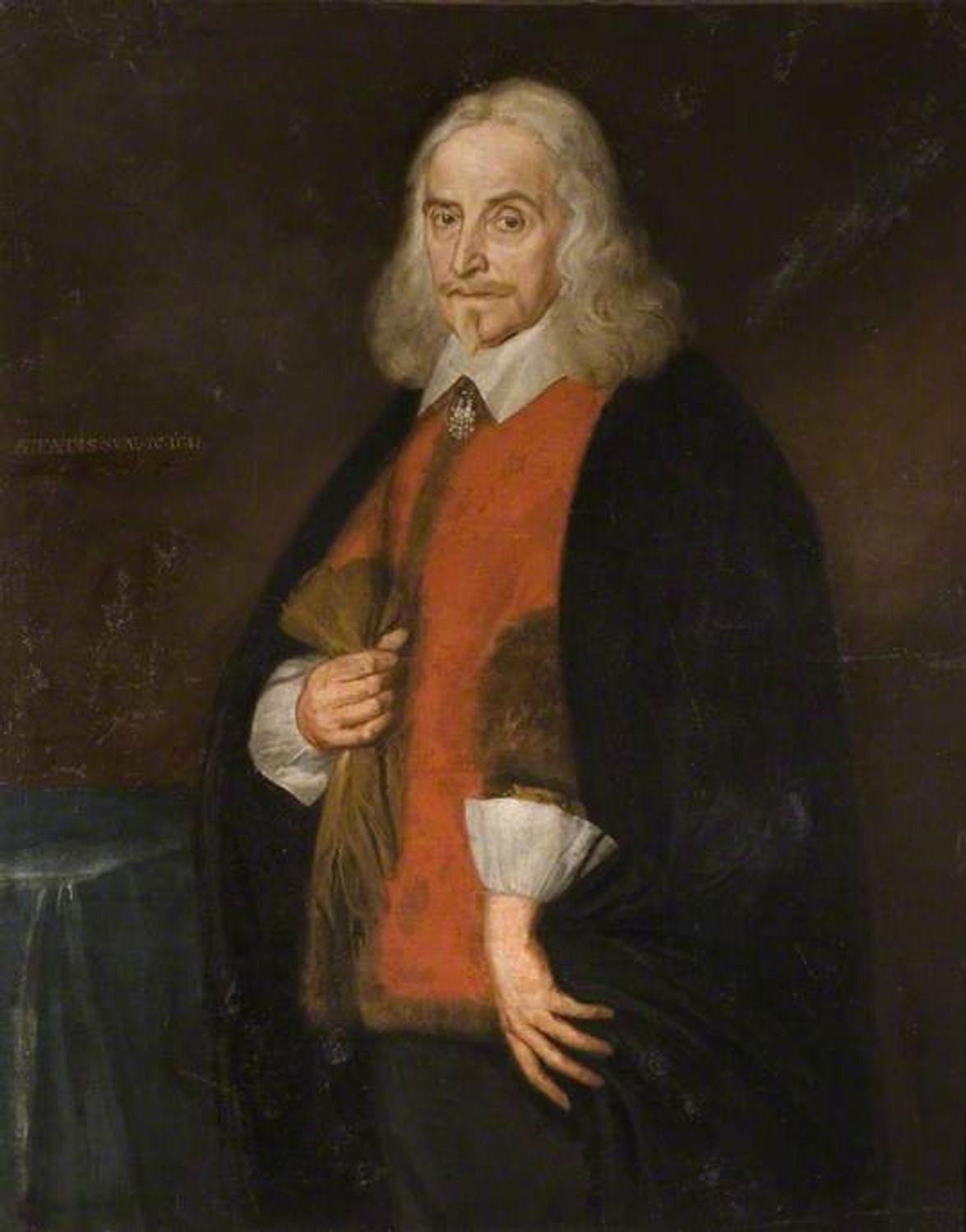
The Ormes cement their position at Warmington with the building of Eaglethorpe house. It is noted that Mary, widow of Miles Orme, son of Humphrey Orme occupies the house in 1607 and that the house is newly built. Architectural features support this, suggesting a 16th – early 17th Century date, as noted on the buildings official listing.
At present our best guess is that Humphrey II comes to Peterborough at some point between 1605 and 1607, where he becomes tenant of the bishop's manor of Borough Bury. We can build this timeline from two mentions of Humphrey in the wills of his brothers. Miles who dies in 1605 and references his brother Humphrey Orme of London; and William who dies in 1607 and references his brother Sir Humphrey Orme of Peterborough.
Our first concrete evidence that links the Ormes to the house at Neville Place Priestgate comes in 1674, in the Northamptonshire Hearth Tax records. Here a Mrs Orme is listed as the householder of a sixteen-hearth and a four-hearth property. The smaller of the two (though still sizeable for the time) is likely a building referred to as “the cottage” which was by the orchard at Novells (Neville) Place, where records show a Charles Orme and yet another Humphrey once lived.
The story of the Ormes is a wonderful example of how History is not as solid as it appears, there are always more details waiting to be discovered, and a cautionary tale to historians on the headaches created by the passing down of names.
1536, Katharine of Aragon
Katharine of Aragon, Spanish princess, first wife and queen of Henry VIII, is buried in the monastic church. Katharine died at Kimbolton, where she was living after her marriage to Henry had been annulled, on 7 January 1536, most likely of cancer. Despite the annulment she had always referred to herself as Henry's only lawful wedded wife and England's only rightful queen. In late December 1535 she wrote her last letter to Henry, as her 'most dear lord and husband'.
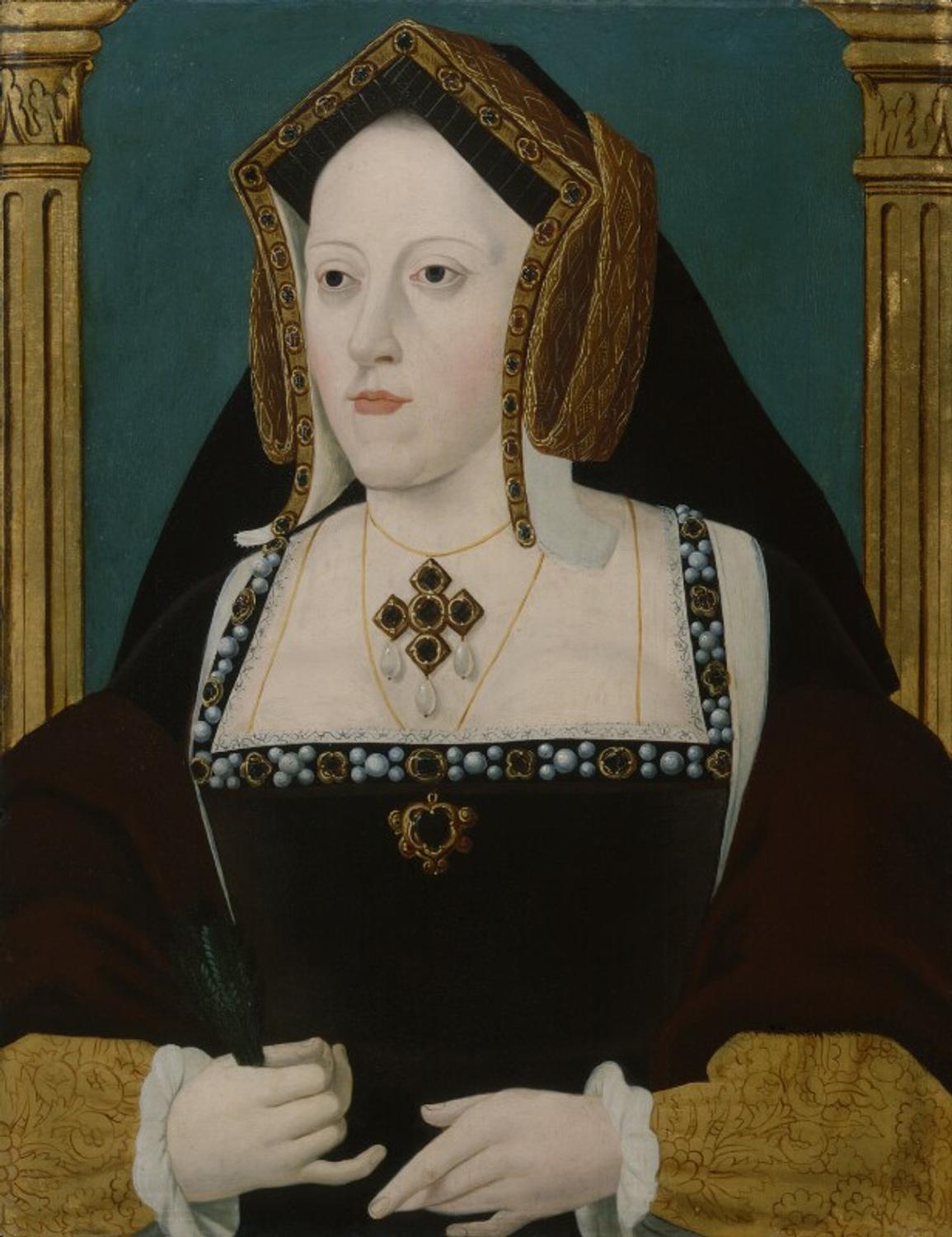
She was ordered to be buried at Peterborough Abbey as the nearest great religious house that befitted her status, whilst not giving her a burial in London where she might have been politically embarrassing. Her funeral was held on 29 January 1536. The heart of the funeral cortege included a coffin wagon covered with black velvet, as were the six horses pulling it, Heralds and fifty servants in black carrying torches, four banners in crimson taffeta and four golden standards. At the door of the abbey church the body was received by four bishops and six abbots and placed under a canopy lit by a thousand candles. Today Katharine is remembered annually by a commemorative service and series of events at the Cathedral and elsewhere in the city around the anniversary of her burial, 29 January. Many visitors place pomegranates – her heraldic symbol – on her tomb.
1536, Katherine of Aragon's Funeral Fabrics
Katherine of Aragon was born in Alcala de Henares in Spain as a princess to King Ferdinand II and Queen Isabella. She died as a former queen, having been exiled to Kimbolton to live out her final years before being buried in Peterborough Abbey in 1536.
At the time, clothing and materials were used as a sign of status, with only the most privileged able to use the best materials and colours. The finest materials involved the combination of threads such as silk and fine strands of metal which were woven together to create glimmering fabrics, the most famous being cloth of gold. Silk was a very time-consuming material to create and even more so when it was woven into velvets and dyed. So, what was used for the funeral of a former queen?
Black silk velvet was chosen to cover Katherine's funeral wagon and members of the funeral cortege also wore black velvet too. It was a material that denoted superiority; it would almost certainly have been made in Genoa, Italy, where the best black velvet was created.1 The thread, the weave and the dyeing process made it a status symbol, but the plain style meant that it could be worn by anyone from the staff of royal households to their pets and not cause offence or break status barriers.
A writer of the time described the cloth placed over Katherine's body as she travelled in the wagon as 'a cloth of gold frieze with a cloth of crimson velvet'2, which would have stood out amongst the black velvet and black cloth used to cover the horses in the cortege. We can imagine people seeing the cortege as it travelled through the countryside and into Peterborough, the cloth of gold and black velvets leaving no one in any doubt that a lady of great importance was travelling to her final resting place.
References: 1. ‘Henry VIII: February 1536, 6-10’, Letters and Papers, Foreign and Domestic, Henry VIII, Volume 10: January-June 1536 (1887), pp. 98-108
2. M. Watt, Renaissance Velvet Textiles, The Met Museum, 2011, <https://www.metmuseum.org/toah/hd/velv/hd_velv.htm> [accessed January 20 2021]
1541, Creation of a Cathedral – and a School
To increase his control over the church in this area Henry VIII created a new bishop (the former abbot John Chambers) and Peterborough Abbey church became a Cathedral by letters patent. The foundation charter of the Cathedral, formally established on 4 September 1541, constituted a chapter of a dean (appointed by the crown) and six canons. In addition, the charter established six minor canons, a deacon, sub-deacon, eight singing men, and eight choristers, two schoolmasters serving 20 scholars and six almsmen. Henry also created a grammar school in the precincts, the foundation of the King’s School.
1541, St. John's Church Swaps a Bell with Leicester Abbey
In 1541 the great bells of St. John's church and Leicester Abbey were swapped over. It is not clear why the bells were exchanged, but the cost of the swap is detailed in the church records.
Robert Newcome received payment for weighing the bells and identifying that one was larger. A man from 'Wyttlyllsey' (Whittlesey) was paid 20p for supplying 'a gable to tacke down the olde bell and hang up the new'. But they were only bit parts in the story.
The bells had to be swapped over, so it was decided that the bell from Peterborough would be driven to Leicester, where they would collect the other bell and return with it. This was 1541 though! Four men including John Gedney and Robarte Allyn set off with 10 horses pulling a cart with the bell on top. They rested for the first night in Uppingham, fixed the cart and continued to Leicester. They stayed in Leicester for several days before making the journey back, stopping again in Uppingham.
In total they took eight days for their journey, fixing the cart several times. All of the costs of food and drink were paid for, as well as their accommodation. Not to mention payment for their time. John Gedney was paid 5 shillings for himself and the hire of four horses. Roberte Allen was paid 14 shillings 'for 6 horsys and 2 men for 8 days'.
References: W. T. Mellows (ed.) Peterborough Local Administration Churchwarden's Accounts 1467-1573 with Supplementary Documents 1107-1488, Northamptonshire Record Society, 1939 p145
1543, Waldram Hall Recorded on a Map
Situated on a turn in the river Welland to the east of Peakirk and Northborough, Waldrum or Waldram Hall has been long gone. It was once an important hall and was owned by William Cecil and the Fitzwilliams. There is believed to have been a building on the site since the twelfth century. There are several references to the hall over the centuries, in parish records and poll books. It is also located on a map of 1543 which is stored in the National Archives.
The hall's position on the Welland was at a good crossing point. A ferry service was provided by the hall across the river and up to Crowland too. This would have been the only crossing point in this vicinity on the Welland before the bridge was built in Deeping St. James. The route was said to have been used by pilgrims heading to Walsingham and was a good source of income.
The hall belonged to the parish of Maxey and a fee was paid to the manor of Maxey to rent it. A fee was also paid that allowed the tenant to charge a toll for crossings and to fish the waters.
The hall was still in use in the first half of the Twentieth Century when pictures and personal accounts exist. By this time the hall was an unprepossessing stone house, regarded as no more than a farmhouse. After the building of two bridges in the Deepings in the Seventeenth and Nineteenth Centuries, the ferry at Waldram Hall fell out of use and the building was no longer a decent source of income. The construction of the railway loop line to Lincoln effectively cut off the building rendering it useless.
Reference: D. Price, River Welland, Amberley Publishing, 2012
1553, Sir Walter Mildmay and Apethorpe Hall
Sir Walter Mildmay was educated at Cambridge and became an important figure in royal court proceedings and as an MP. In 1553, in the first year of the reign of Queen Mary, Mildmay was elected MP for Peterborough, having recently gained Apethorpe Hall (now Palace). He was a good friend of William Cecil of Burghley (who had not started building Burghley House yet) and he appears to also have been a good friend of Sir William Fitzwilliam II who had inherited his family estate at Milton and was a fellow MP for Peterborough in 1553; his daughter Winifred married Sir William’s son, also called William. He was also involved in the life and death of Mary Queen of Scots, visiting her with Cecil at Chatsworth and at nearby Fotheringhay, shortly before her execution.
Mildmay gained Apethorpe in 1551 after swapping lands he owned with King Edward VI, Apethorpe having been owned by Henry VIII. Queen Elizabeth I visited Mildmay there in 1562, with an engraving left on a chimney breast to commemorate the occasion, visiting twice more after that. We can also imagine rousing conversations between Mildmay, Cecil, Fitzwilliam and other Tudor dignitaries in some of the Tudor parts of Apethorpe that still stand today. The atmospheric Chapel and Hall are two very fine features of the original Tudor house that remain and can be viewed on guided tours of the house in the summer months with English Heritage.
References: M. R. P., Fitzwilliam, William (c. 1550-1618), of Dogsthorpe and Milton Northants, The History of Parliament Online, <historyofparliamentonline.org> [accessed 11 February 2021].
S. M. Thorpe and R. J. W. Swales, Mildmay, Walter (by 1523-89), of Apethorpe Northants. and London, The History of Parliament Online, <historyofparliamentonline.org> [accessed 11 February 2021].
1555, Burghley House
1555 - 1587 Burghley House was built by William Cecil, later Lord Burghley, Elizabeth I's Secretary of State and closest adviser. It was originally designed in the shape of an 'E' to honour the queen, although she was never to visit. However, Queen Victoria was one of many high-profile visitors to the house and she planted a tree in the family's personal gardens at the back of the house. The gardens and park of Burghley House were laid out by Lancelot 'Capability' Brown in the 18th century, in line with many great houses of the time.
William Cecil's descendants still live in the house and hold the Burghley Horse Trials every September, which have been running since 1961.
1560, William Lattimer: Anne Boleyn's Biographer
Peterborough Cathedral has two well-known connections to Tudor Queens. The tombs of both Katherine of Aragon and Mary Queen of Scots could for a while both be found in the Cathedral. Sadly, Mary Queen of Scots was moved down to Westminster, but Queen Katherine is still resting in peace.
Most people think that is where the connections to Tudor royalty end, but that is not so. In 1560 William Lattimer or Latymer, became Dean of Peterborough Cathedral. He had been chaplain to Anne Boleyn during her reign and had smuggled French religious books into the country for her. Later, he became chaplain to Elizabeth I and wrote the Chronickille of Anne Bulleyne (Chronicle of Anne Boleyn) a biography of her life. He wrote the book for Elizabeth I, her daughter.
Lattimer died in 1583 and was buried in Peterborough Cathedral.
1570, Woodcroft Manor's Royal Owner
Woodcroft Castle used to be known as Woodcroft Manor. It dates to the twelfth century and appears frequently in court papers over the centuries. It is best well-known for the Civil War siege and death of Dr Michael Hudson, but it has a much better connection.
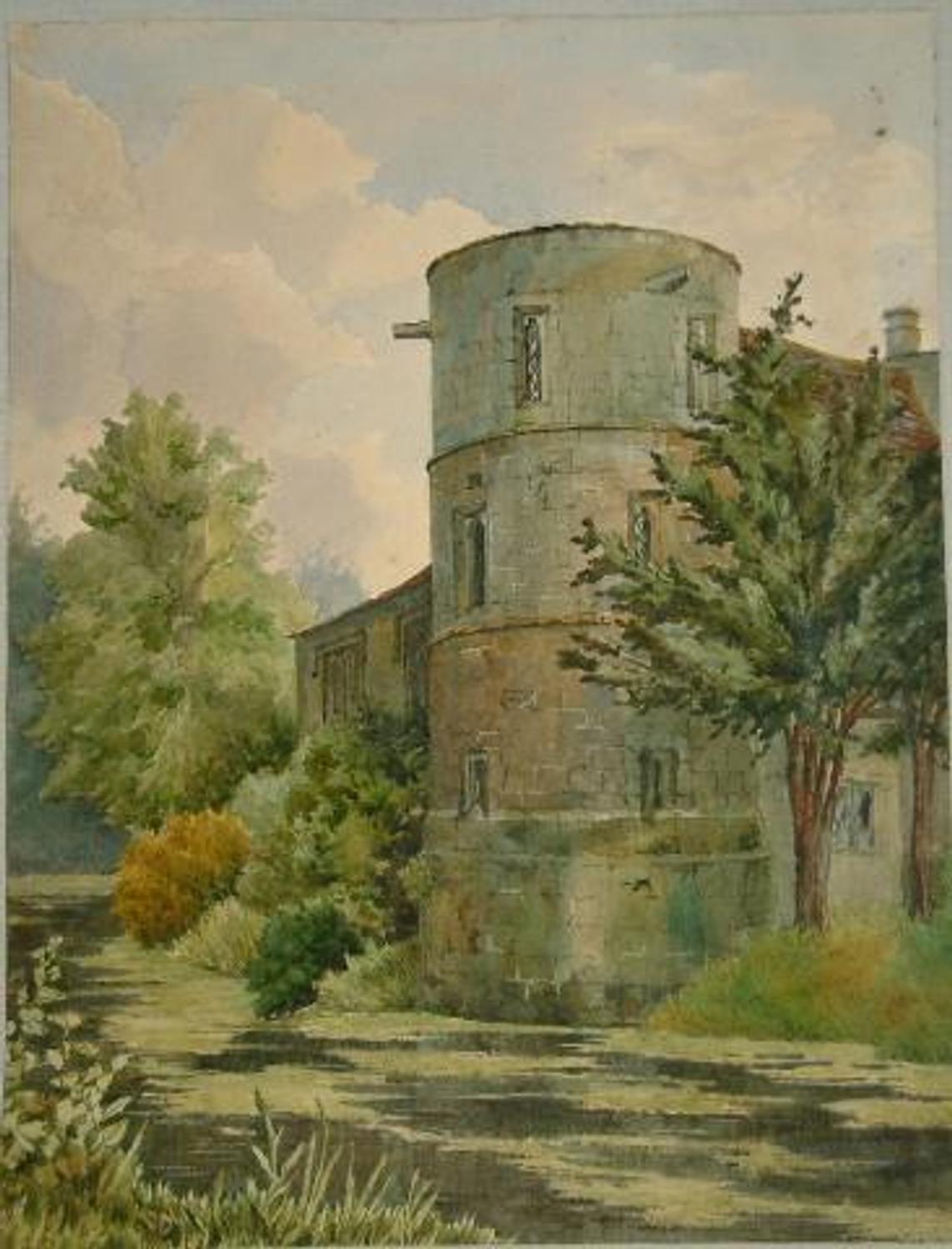
On 6th October 1570 Woodcroft Mansion house was referred to as having been 'purchased of the late King Edward VI'. Many of the local manors have been owned by monarchs, often being given as presents. However, the ownership of Woodcroft might suggest that it was once much more important than it is now. Indeed, in 1575 the manor was valued at £15, 6 shillings and 8 pence, which was more than Milton Manor.
1572, Creation of the Feoffees in the City
Peterborough was, for many years, controlled by the abbey. However, the creation of municipal control started in 1572 when three local men, Robert Mallory, Thomas Robinson and Jeremy Green bought some of the church lands and offered them to the city. Income from the lands was used to help the poor and keep the roads, church and other buildings in good repair with the advice of the church wardens. 14 Feoffees were chosen to oversee these activities, working as councillors do in the 21st century.
The Men
The feoffees consisted of between 4 and 14 respectable, wealthy men. They worked together to keep the city in good order and to help those in dire straits. The account and minute books of the feoffees detail monies given to the poor. Money was provided for food or clothing and sheets to wrap up bodies if they died. Well-known feoffees included Humphrey Orme, Thomas Deacon and William Hake.
Feoffees Buildings
Evidence of the work of the Feoffees can be seen in the first almshouses, founded in 1722 in Cumbergate. They were also the driving force for the Guildhall or Buttercross in the marketplace, which was where they held their meetings. They originally met in the Moot Hall or Guildhall, which was on the corner of Cumbergate.
1574, Thorney Monastery Granted to the Earl of Bedford
The site of the medieval Benedictine monastery of Thorney was granted by Henry VIII to John Russell, 1st Earl of Bedford, beginning a connection with the Russell family which lasted until 1910, with the current primary school still called the “Duke of Bedford School.”
1574, Abbey House, Thorney
Abbey House sits on the B1040 to the west of the Abbey Church of St Mary and St Botolph and is now part of a complex of three individual premises, which include Thorney Abbey House or Place, to the West. The origins of Abbey House are believed to be Tudor, with sadly little of the first house remaining.
Abbey House was believed to have started as a grand hall house, the footprint being the furthest east section of the house, with a kitchen to the north of the hall. It originally belonged to Thorney Abbey but was sold to the Russell family in 1574 who bought several properties in the Peterborough area during the Tudor period, including Dogsthorpe Grange, which they appear to have sold in the year they bought Abbey House.
The house was considerably expanded in the 1660s, which meant a wall of windows became an internal wall. They now form an unusual feature in a sitting room, along with a sixteenth century fireplace. It is likely that other features of the Tudor building had survived, but a fire in 1971 meant that many details were lost.
For many years the house was home to Thorney Wildlife Park and some of the animals were kept in the house during the winter to keep them warm and dry. It was in February 1971 when a serious fire broke out in the Tudor part of the house, causing the death of three monkeys. A newspaper report of the time tells us that there were many small rooms and corridors in the original upper floors, which were all lost to the fire. The present building contains large rooms with only a couple of fireplaces hinting at the history now lost.
All of the buildings and grounds in the complex are private homes.
Reference: J. Ayton, Country House in Cambridgeshire, <Justinayton.com> [accessed 15 February 2021].
1576, William Cecil Honoured
In 1576 Elizabeth I passed the title of Lord Paramount of the Liberty of Peterborough from the Bishop of Peterborough to William Cecil, Lord Burghley, whose descendants still hold this title.
1587, Robert Wingfield: Witness at the Execution of Mary Queen of Scots
Mary Queen of Scots was executed at Fotheringhay Castle on 8th February 1587 and buried at Peterborough Cathedral. The funeral nearly six months later has been frequently written about, but less so the local connection at her execution.
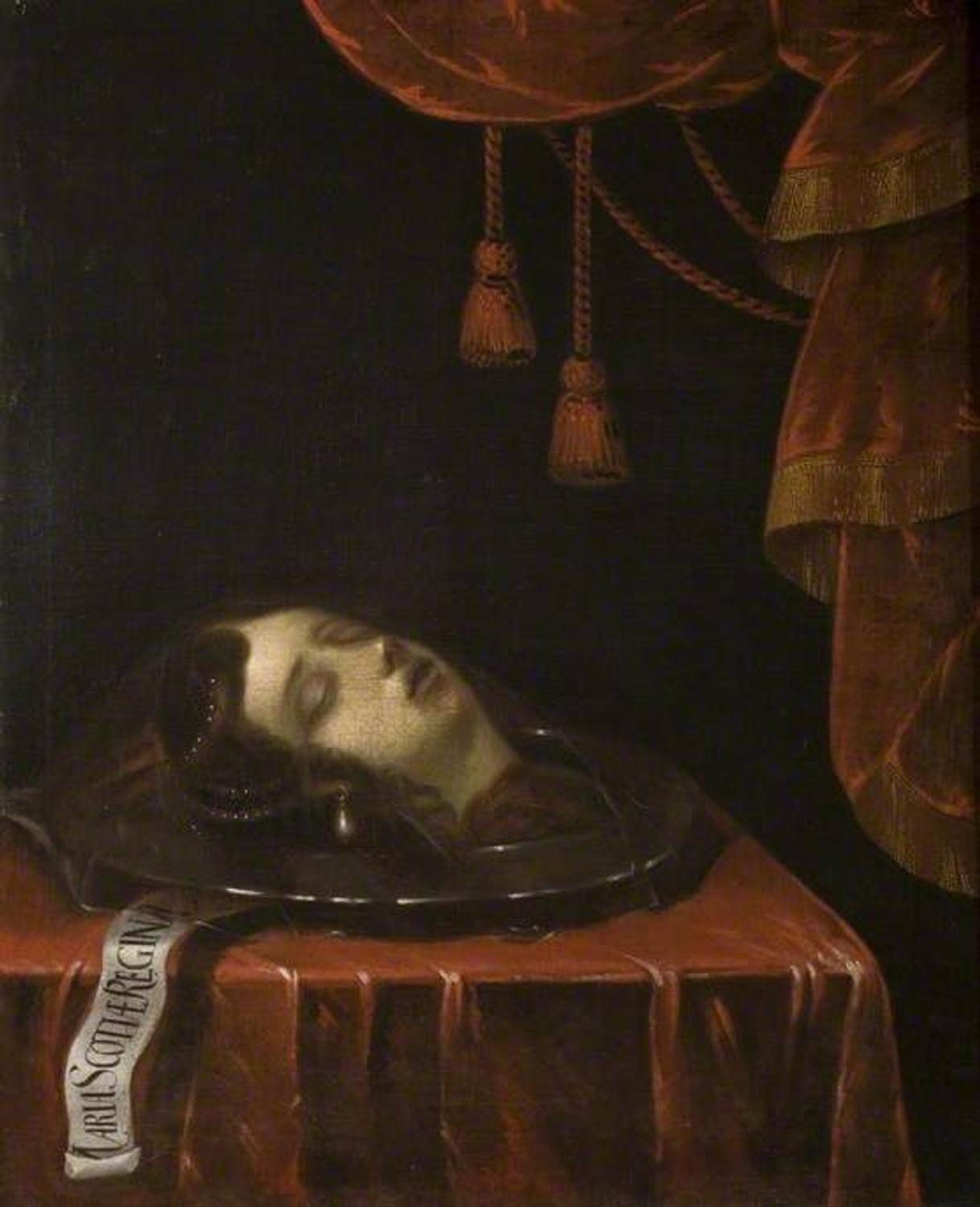
William Cecil, Lord Burghley, persuaded Elizabeth I to order her execution but he did not attend it. Instead, his nephew MP Robert Wingfield of Upton, Peterborough, was tasked with witnessing and reporting back the event to his uncle. He wrote a description three days later, which is still one of the most influential accounts of the execution. In it he recounts the fine details of her clothing, her final words, her mannerisms and the actions of her staff and dignitaries. He recalled how the axe was dropped twice to sever her head after a small piece of flesh remained after the first chop and that her little dog was found hiding in her skirts after her death.
This report differs somewhat from the sentimental report of Pierre de Bourdeille, one of Mary's household. He retold a more dramatic story that emphasised her suffering before she died and supported the idea of her dying as a martyr.
Many sources name him as Sir Robert Wingfield, but he wasn't knighted until 1603 after showing hospitality to the new King.
References: "The Execution of Mary, Queen of Scots, 1587," Eye Witness to History, www.eyewitnesstohistory.com (2005).
R. Wingfield, Execution of Mary Queen of Scots, History's Eye Witness Account, 8 February 1587, Wingfield Family Society (2017) < https://www.wingfieldfamilysociety.org/execution-of-mary-queen-of-scots/>
1587, Burial of Mary, Queen of Scots
On the 1st of August 1587 Mary, Queen of Scots was buried in the Cathedral, 5 months after having been executed at nearby Fotheringhay Castle. The Dean, Richard Fletcher, officiated at both her execution and her funeral.
On Sunday 30 July her body was carried to Peterborough by night and placed in the Bishop’s Palace. The Funeral was held on the 1 August, with the Cathedral being hung with black and the arms of Francis II and Darnley displayed. An effigy of Mary was carried along with her emblems of state. The cortege included the Countess of Bedford, the Bishop and Dean of Peterborough, the Bishop of Lincoln and one hundred poor widows clothed in black. The Bishop of Lincoln preached the sermon. The Dean presided over the burial, and the officers cast their broken staves on the coffin. A lavish funeral banquet was held in the Bishop’s Palace. The funeral cost £321, one third of which was for food and drink!
Mary was re-interred on the orders of James I at Westminster Abbey in 1613, where she was buried next to Elizabeth I.
Old Scarlett
‘Old Scarlett’ was the nickname of Robert Scarlett, parish sexton and gravedigger throughout the Tudor period. He lived to the prodigious age of 98, dying in 1594 Married twice, he is known for burying Katharine of Aragon and Mary, Queen of Scots inside the Cathedral.
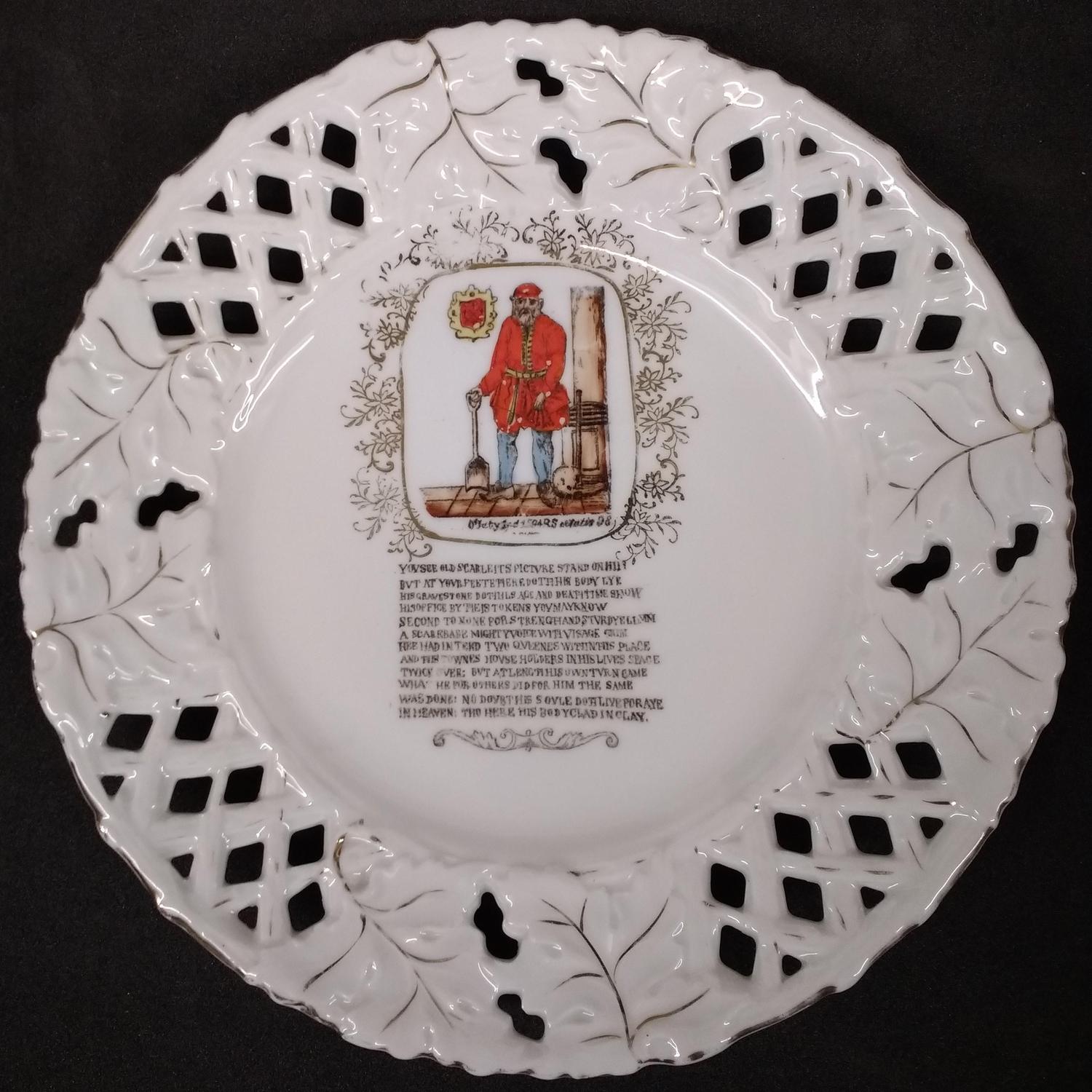
Amongst the hundreds of people that Scarlett buried during his lifetime was one ‘Edward the Foole’, a native of Crowland by birth and former court jester to King Henry VIII, laid to rest here in 1563. As was common practice at the time, and to allow for more burials in an already packed graveyard, the skeleton would have been exhumed some years later and the bones reburied in stacks. The image of an elderly gravedigger exhuming a royal jester’s skull might have stuck in the head of a Peterborough schoolboy, John Fletcher, the son of the then Cathedral Dean. Fletcher went on to become a noted Elizabethan playwright and worked with Shakespeare, even co-writing three plays with him, including the aforementioned ‘Henry VIII’. Is it possible that Fletcher may have suggested this scene to Shakespeare? Unfortunately ‘Hamlet’ was written between 1599 and 1601, and we have no evidence that the two men met until at least five years later, but it’s a tantalising thought nonetheless!
1600, Towering Over Wothorpe
Wothorpe Towers is a grade 1 listed building on the edge of the Soke of Peterborough. It was commissioned by Thomas Cecil of Burghley House in around 1600 as a lodge. Being so close to Burghley Park, it did not have its own deer park, as many lodges do. The land was originally in the ownership of Crowland Abbey, and a small nunnery existed there. Following the reformation, the land was gained by Richard Cecil, who was Groom of the Robes in Henry VIII's court and Thomas Cecil's grandfather.
Sadly, the building is completely ruinous. The four towers thankfully remain and provide the building with its distinctive silhouette. They are four stories high, which allowed them to stand above the three-storey house. However, the main living space has all been lost, with the exception of a central spine wall and a few additions.
The ruins of Wothorpe Towers are in private ownership, but the gardens are being landscaped for visitors.
People Living in Tudor Peterborough
Thanks to the Churchwardens Accounts of St John's Church in Peterborough, we know some of the people living in the city in Tudor times. The church recorded how much rent was paid on property and who paid it. Most of the names are of men, but there are some women. Some people are only recorded by their surname.
A few of the names seem rather odd to modern eyes because they are spelt very differently to today, so alternatives are given. The four districts recorded relate to streets or areas that you might not recognise today, so their modern equivalent is provided. Dogsthorpe was included as a district but has been missed off this list.
- Prestgatt (Priestgate)
- Fraunces (John Francis), Edward Bellamy, Elexaunder Mylner (Alexander Milner), Joanne Fletcher, Robart Pynnyng (Robert Pinning), Agnys Coper (Agnes Cooper), Sawnder (Alexander?) the labourer
- Markettsted (Cathedral Square)
- William Haw, George Spenser, Thomas Whyght (White), [Mistress Baley deleted], Sir William Bell, Allys Padman (Alice Padman)
- Hygatt (Bridge Street)
- Bygges Wyffe (Bigge's wife), John Houndysley (John Houndesley), John Pattenson
- Westgatt (Westgate)
- Wylkynson (Wilkinson), Joanne Cosson, William Farssett (possibly Farcet)
- Bowngatt (Boongate)
- John Monesty, The Myller (Miller)
Reference: W. T. Mellows (ed.), Peterborough Local Administration Churchwarden's Accounts 1467-1573 with Supplementary Documents 1107-1488, Northamptonshire Record Society, 1939
The Dung at St John's
The church accounts belonging to St John the Baptist in the centre of Peterborough, were thankfully transcribed by W. T. Mellows some years ago. They allow the delicate pages of the original accounts to rest in the archives whilst the transcriptions are thumbed over. Far from being a dull record of money passing through the church’s hands, the accounts provides us with flashes of everyday life and the people working for or helping the church and from them we can learn a little more about life in the past in the city.
One of the records regards a William Farsett (possibly Farcet) who was a church warden. Unfortunately for him, he drew the short straw and had the task of ‘carrying out the doyng in the churchyarde’, which Mellows has indicated was dung! He was paid the handsome sum of 8 pence for the job, which is an excellent rate for 1543. Annoyingly there’s no indication of where in the churchyard the dung was, or whether it was human or animal. At least a later account tells us he had a cart, so he wasn’t moving it entirely by hand…
Reference: W. T. Mellows (ed.), Peterborough Local Administration Chruchwarden's Accounts 1467-1573 with Supplementary Documents 1107-1488, Northamptonshire Record Society, 1939
